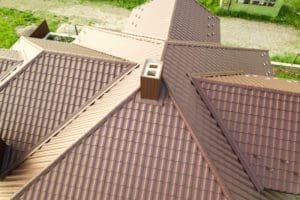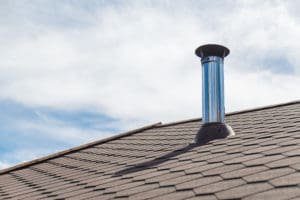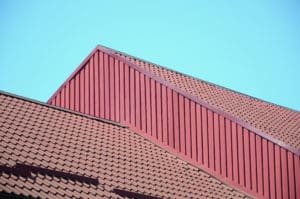Introduction to Traditional and Seamless Gutters
Gutters are like silent heroes, quietly protecting your home from water damage. Traditional gutters have been around for decades, assembled in sections and joined together, leaving small seams. On the flip side, seamless gutters are the newer kids on the block. Made from one long piece of metal, they’re custom-fitted to your home on the spot. Fewer seams mean these gutters are less likely to leak or clog with debris. Your choice between them hinges on balance—it’s about the cost versus the benefits. Traditional gutters are easier on the wallet but require more upkeep, while seamless gutters offer a sleek look and less maintenance but at a higher initial investment. Your weather, budget, and aesthetic preferences will direct your decision. Both do the job well, but it’s about how you want them to fit into your life.

What Are Seamless Gutters?
Seamless gutters are exactly what the name suggests – they have no seams. Unlike traditional gutters that are pieced together in segments, seamless gutters are made from one continuous piece of metal, custom-sized to fit your home’s dimensions. This design means fewer leaks because there are no joints that can separate or allow water to seep through. They’re typically made on-site by gutter specialists using a mobile gutter machine. You might think seamless sounds fancy, but they’re pretty standard nowadays. Most homeowners go for seamless because they have a cleaner look, need less maintenance, and offer better protection against the rigors of bad weather. So when you’re eyeing up those gutters, remember seamless is synonymous with sturdy and sleek.
The Makeup of Traditional Gutters
Traditional gutters have been the standard for years. They’re generally made of sections of metal—like aluminum, steel, or copper—that are joined together at seams or joints. Installers put these sections together on-site, ensuring they fit the precise measurements of your home. You might see screws or rivets at the points where the sections connect, which keeps everything in place. Because of these seams, though, there’s a chance for debris to collect or for leaks to develop over time. Regular maintenance can help to minimize these issues. It’s worth noting that while traditional gutters require more upkeep due to their structure, they come with the advantage of being tailor-fitted and are often more cost-effective upfront than their seamless counterparts.
Key Differences Between Traditional and Seamless Gutters
Traditional and seamless gutters do the same job but take different paths to keep rainwater at bay. The main difference lies in how they’re made. Traditional gutters come in sections which means they are pieced together along your roof’s edge. These joints can become a spot for leaks and debris accumulation over time. In contrast, seamless gutters are measured and cut to fit your home in one continuous piece, dramatically reducing the chances of leaks. Also, because they have fewer seams, they snag less debris, making them easier to maintain. When we talk cost, seamless gutters are typically more expensive upfront due to the custom-fitting requires, but they might save you money in the long run with fewer repairs. Think of traditional gutters as your standard solution, while seamless gutters are the custom-tailored suit of water management for your home.
Pros and Cons of Seamless Gutters
When you’re looking at gutters for your home, seamless options might catch your eye. There’s good reason for that. Seamless gutters are made on-site to fit your home perfectly, reducing the chance of leaks since there are no joints except at the corners. They’re a sleek choice and come in various colors to match or complement your home’s exterior. But here’s the deal, seamless gutters can be more expensive. We’re talking about an average cost that could be higher than regular gutters. They require professional installation due to the custom needs, meaning you can’t just DIY this during a weekend. And if a part gets damaged? You might need to replace a whole section because they aren’t sectional like traditional ones. Plus, remember, the cost and hassle of repair depend on the material you choose, whether it’s aluminum, copper, or steel. On the flip side, because they are custom-fit and have fewer joints, they’re less likely to clog and need less frequent cleaning. Bottom line, seamless gutters are an investment that can add value to your home and reduce headaches down the line, as long as you’re willing to front the extra cash at the outset.
Comparing Durability and Maintenance
Traditional gutters have joints and seams, which naturally become weak points over time. Water can cause these spots to rust and leak. On the other hand, seamless gutters are made as one long piece, cut to fit your home precisely, so there’s less chance for leaks. Generally, seamless gutters are stronger and need less upkeep, lasting longer before needing replacement. However, when something does go wrong, seamless gutters can be tougher to repair due to their continuous design. Both types need regular cleaning to prevent clogs, but seamless gutters have a slight edge in durability and maintenance.
Aesthetic Differences: Which Looks Better?
When it comes to gutters, looks might not be your top priority, but don’t shrug it off. Traditional gutters have visible seams and screws, and let’s be honest, they stick out like a sore thumb. On the other hand, seamless gutters have a smooth finish that blends in with your roofline. They’re custom-fit to your house, making them look like they were always part of the deal. Traditional gutters can look pieced together, but seamless ones flow around your home smoothly, which often wins them the beauty contest hands down. So, if curb appeal matters to you, seamless gutters have a clear edge.
Cost Analysis: Seamless vs. Traditional Gutters
When it comes to gutters, you’ve got two main types: traditional and seamless. Breaking down costs, traditional gutters are usually lighter on the wallet upfront. They run between $3 to $5 per linear foot. These are your standard gutters, coming in sections that are pieced together. On the flip side, seamless gutters are custom fit to your home, meaning fewer leaks and less maintenance. For this tailored fit, you’re looking at about $6 to $9 per linear foot. Yeah, they’re pricier initially, but they’re sturdy and could save you cash on repairs down the line. Remember, installation is extra and varies by location and the complexity of your roof line. So, picking between traditional and seamless isn’t just about the sticker price. You’re investing in longevity and ease of maintenance too.
Installation Process for Traditional and Seamless Gutters
When you’re deciding between traditional and seamless gutters, the installation process is key. Traditional gutters come in pre-cut sections, which are assembled and attached to your home’s eaves. Installers will make sure these sections fit together tightly, but gaps can form over time. This is where leaks start to show up.
Seamless gutters, on the other hand, are custom-cut to fit the length of your home right on the spot. A specialized machine shapes them from a single metal coil. Because they’re made in one long piece, there are no joints except at the corners. This means fewer leaks. It’s a clean, precise process that requires professional equipment and expertise, but results in gutters that are tailor-made for your house.
Both types need a team that knows their stuff. With traditional gutters, installers need to be thorough and careful to prevent gaps. With seamless, the skill comes in operating the machine and measuring your home’s dimensions like a pro.
In short, traditional involves piecing together the puzzle, while seamless is more like rolling out a custom-fit sleeve for your home’s edges. The right choice depends on what’s important to you – upfront cost or long-term reliability.
Making the Right Choice for Your Home
When it comes to gutters, the main two contenders are traditional and seamless. Traditional gutters come in pre-cut sections that are connected and sealed during installation. The breaks between sections leave them vulnerable to leaks. They’ll need more maintenance, but the upfront cost is often lower, and you can do some of the work yourself if you’re handy.
Seamless gutters, however, are measured and cut on-site to fit your home perfectly. This means fewer leaks since there are no joins except at the corners. They’re a bit more expensive, but they offer less hassle in the long run with lower maintenance needs. It’s not a DIY job, though – professional installation is a must. Think about your budget, your ability to maintain the gutters, and the level of precipitation your home handles when making your choice. Whatever you decide, ensuring proper gutter installation and maintenance is key to preventing water damage to your home.





